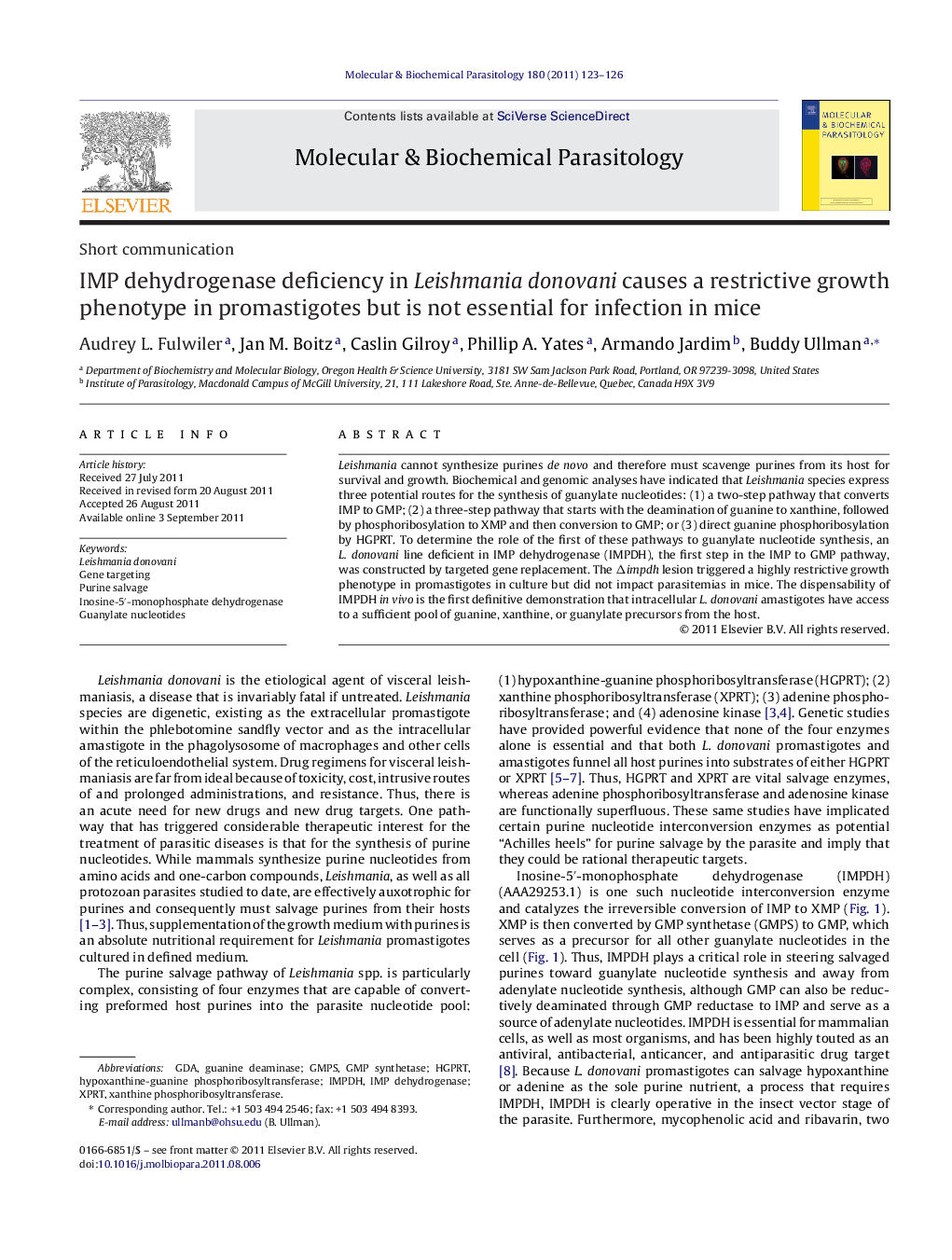| Article ID | Journal | Published Year | Pages | File Type |
|---|---|---|---|---|
| 2829891 | Molecular and Biochemical Parasitology | 2011 | 4 Pages |
Leishmania cannot synthesize purines de novo and therefore must scavenge purines from its host for survival and growth. Biochemical and genomic analyses have indicated that Leishmania species express three potential routes for the synthesis of guanylate nucleotides: (1) a two-step pathway that converts IMP to GMP; (2) a three-step pathway that starts with the deamination of guanine to xanthine, followed by phosphoribosylation to XMP and then conversion to GMP; or (3) direct guanine phosphoribosylation by HGPRT. To determine the role of the first of these pathways to guanylate nucleotide synthesis, an L. donovani line deficient in IMP dehydrogenase (IMPDH), the first step in the IMP to GMP pathway, was constructed by targeted gene replacement. The Δimpdh lesion triggered a highly restrictive growth phenotype in promastigotes in culture but did not impact parasitemias in mice. The dispensability of IMPDH in vivo is the first definitive demonstration that intracellular L. donovani amastigotes have access to a sufficient pool of guanine, xanthine, or guanylate precursors from the host.
Graphical abstractImmunolocalization of IMPDH in wild type, Δimpdh-2, Δimpdh-2[pRP-IMPDH] and Δimpdh-2[pRP-impdhΔAKM] promastigotes.Figure optionsDownload full-size imageDownload high-quality image (64 K)Download as PowerPoint slideHighlights► IMPDH is the first step in the conversion of IMP to guanylate nucleotides. ► An IMPDH-deficient mutant cannot make guanylate nucleotides from hypoxanthine or adenine. ► A Δimpdh lesion can be bypassed by adding xanthine or guanine to the medium. ► Glycosomal localization of IMPDH is not necessary for its function in promastigotes. ► A Δimpdh mutant remains infectious in the mouse model.
